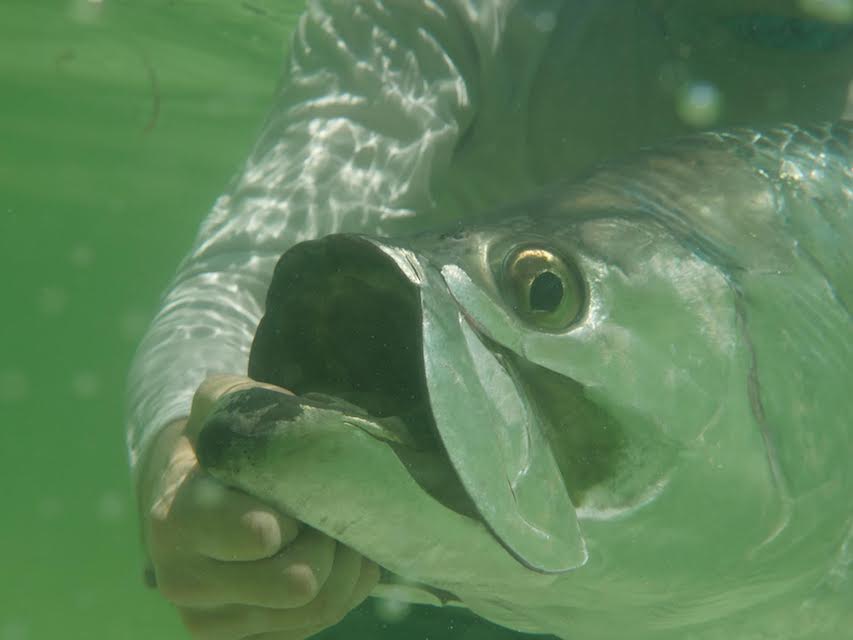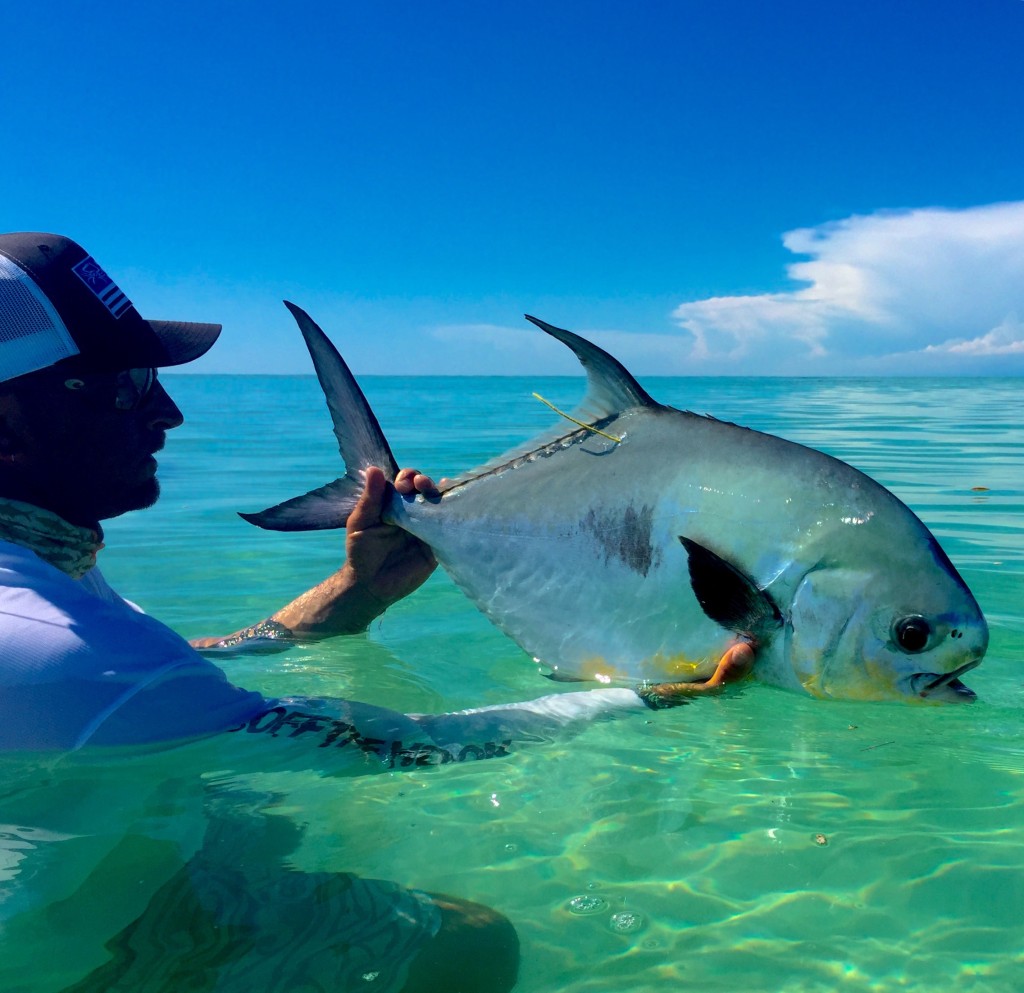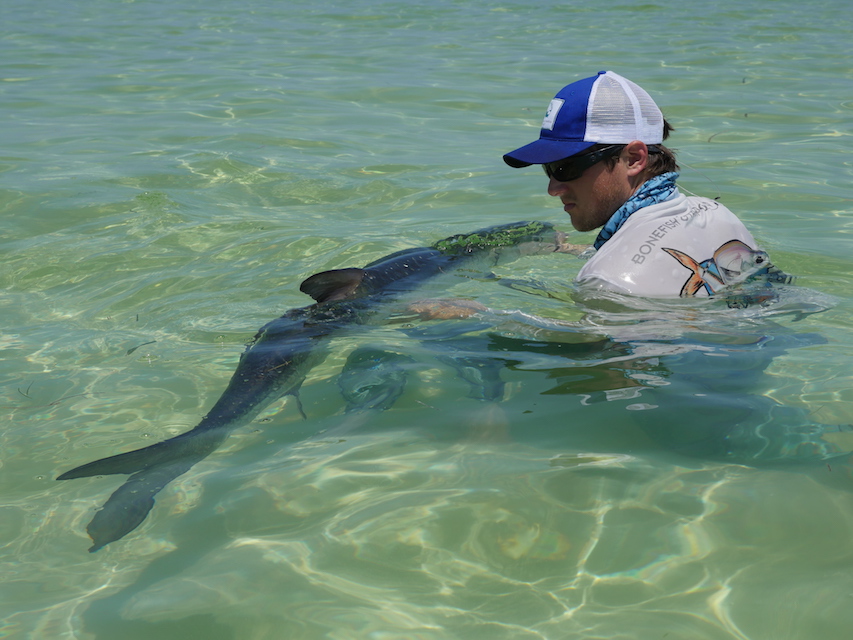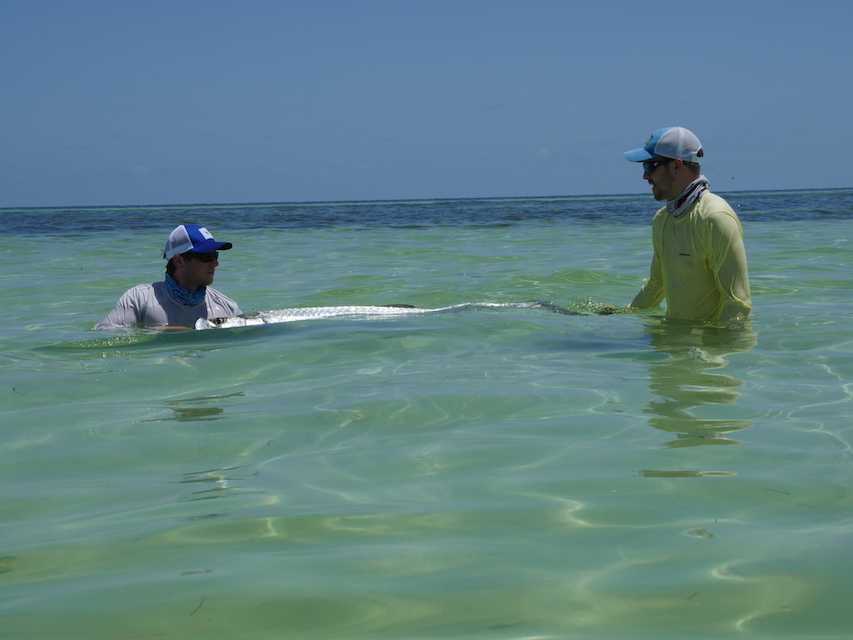
This tarpon and permit tagging project overview is the kickoff of a collaboration between Dr. Andy Danylchuk, Fish Mission, and Moldy Chum.
The research on this ambitious project includes Dr. Danylchuk, along with Lucas Griffin and Dr. Jack Finn (UMass Amherst), Dr. Jake Brownscombe and Dr. Steven Cooke (Carleton University), and Dr. Aaron Adams (BTT).
The Big Three
The ‘Big Three’ flats fish – bonefish, permit, and tarpon – support exciting and productive recreational fisheries throughout the Western Atlantic, Caribbean, and the Gulf of Mexico. Unfortunately, these fish are not immune to, as Sandy Moret once put it, the “weight of humanity”. Although predominately catch-and-release species, all of the ‘Big Three’ have suffered from overexploitation and disturbances related to coastal development. To manage and conserve these fish, it is critical that we understand how they make a living, what constitutes their essential habitats, and when and how they move – something scientists call their ‘spatial ecology’.
For bonefish, numerous scientific studies are completed or ongoing focusing on their movements and habitat use in The Bahamas. For example, a study published in 2011 identified an offshore spawning location for bonefish in Eleuthera. This type of information is essential for protecting key habitats for bonefish, for example, from the development of shipping channels or ports. In Florida, however, we still have much to learn about the spatial ecology of the Big Three – ironically, the putative birthplace of flats fishing. Although we have our own observations and anecdotes, information on the essential fish habitat for permit and tarpon is especially scarce.

Permit
While often targeting by anglers on the flats, conventional wisdom suggests permit spend the majority of their time in deeper water around natural and artificial reefs and shipwrecks, which are also essential spawning habitats. It is here, in deeper waters, where anglers and spear-fishers more commonly target them for harvest, often around their spawning aggregations when they are most vulnerable. Unfortunately, recent reports from guides and anglers suggest their numbers are declining. A Special Permit Zone was recently established around the Florida Keys including nearshore reefs and shipwrecks, which places greater restrictions on permit harvest, yet it does not prohibit it. Because we know so little about permit movements and population dynamics, it is uncertain whether the current regulations will conserve permit populations and support productive fisheries. In particular, it is unclear what proportion of the population migrates into shallow water flats to feed which in turn supports the flats fishery, and how frequent permit move between flats habitats and nearshore structures.

Tarpon
Although tarpon, like permit, are targeted between the flats and deeper waters, their complex movements between the two have left many guides and anglers ruminating at night: Just how much do fish move between various regions of the Gulf of Mexico and Western Atlantic? What proportion of tarpon are ‘residents’? Is there a certain size when tarpon begin to migrate, or is it some other trigger? Do tarpon use the same spawning sites each year? Do changes in freshwater flows into coastal areas, including the Florida Everglades, Apalachicola, St. Lucie River, Caloosahatchee River, and Indian River Lagoon, influence tarpon movements and determine the movement patterns and habitat use of tarpon? A few of these questions tried to be answered with satellite tags, but there are considerable limitations to this technology that limited insights into the spatial ecology of the silver king.

The Research
To answer some of these pressing questions, Bonefish & Tarpon Trust, in collaboration with Carleton University, University of Massachusetts Amherst, Florida International University, and the Florida Fish and Wildlife Conservation Commission, are conducting acoustic telemetry studies to track permit and tarpon movements throughout the flats, nearshore reefs, shipwrecks, and coastal waters across the Gulf of Mexico and Western Atlantic. These projects involve surgically implanting ultrasonic transmitters into fish and tracking their positions using receivers (listening stations) throughout the Florida Keys and beyond. Along with BTT sponsored receivers, other scientists and research institutions have invested in identical receivers along the continental US coast, and this larger network of receivers greatly increases the ability to detect tagged permit and tarpon as they cruise coastal waters well beyond the Florida Keys.
These studies will enable us to understand the extent of permit and tarpon home ranges, the frequency with which they visit the flats and deeper waters, and the timing and locations of their spawning activity. With the collaborative help from anglers, guides, and scientists, the information gathered from these studies will be critical for the proper conservation of these two important members of the Florida Grand Slam.
Support
These integrated projects would not be possible without the generosity and expertise of local guides. Many thanks to all the great Captains including Will Benson, Brandon and Jared Cyr, Danny Flynn, Travis and Bear Holeman, Sandy Horn, Rob Kramarz, Jordan Pate, Zach Stells, Jason Sullivan, J.R. Waits, and Newman Weaver, to name just a few. Additional support for these projects comes from Costa Del Mar, The March Merkin Permit Fishing Tournament, Hell’s Bay Boatworks, Mavericks Boats, Cabin Bluff as well as from private donations. Donors may sponsor individual tags or receivers, and in return receive information on their tagged permit or tarpon, as well as updates on its movements over time.
If you are interested in supporting these projects, please click on the following links.
You can also contact Mark Rehbein, BTT Director of Development and Communications at 703-350-9195 or mark@bonefishtarpontrust.org
Written by Dr. Jake Brownscombe (Carleton University), Lucas Griffin (University of Massachusetts Amherst) and Dr. Andy Danylchuk (University of Massachusetts Amherst).





